Ever wondered why ice builds up under the deli drawer? Let me be your detective as we unravel the secrets of Samsung refrigerators.
We’ll discover the causes and find solutions to prevent this icy surprise. Get ready to become an expert in fridge maintenance and keep your food fresh and frost-free.
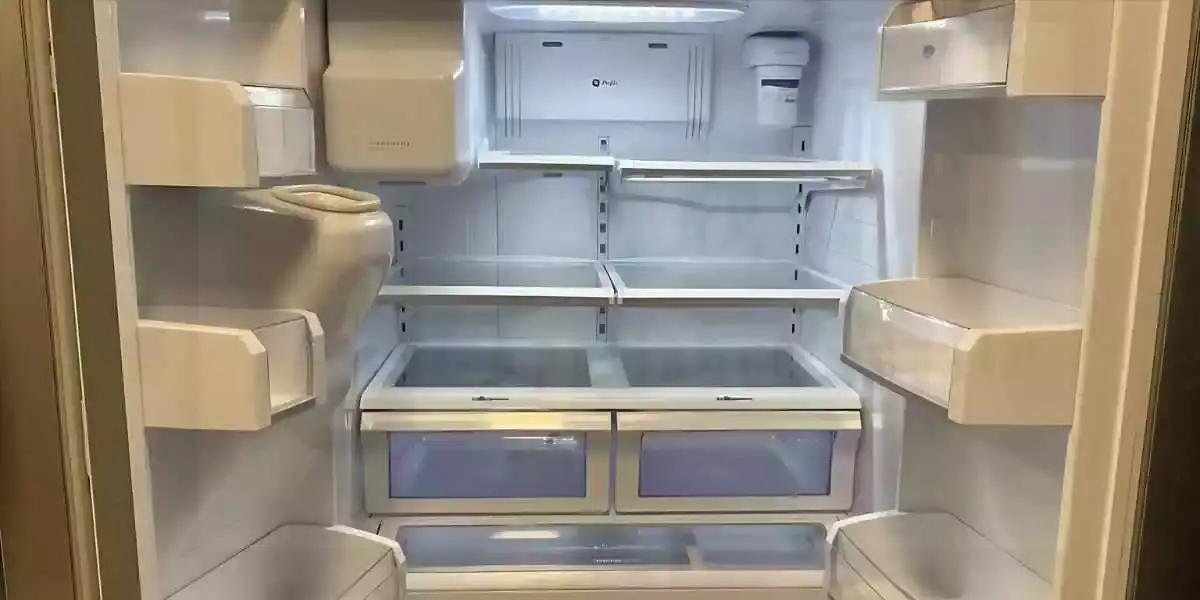
Common Causes of Samsung Refrigerator Ice Build-Up Under the Deli Drawer
Incorrect Temperature Settings:
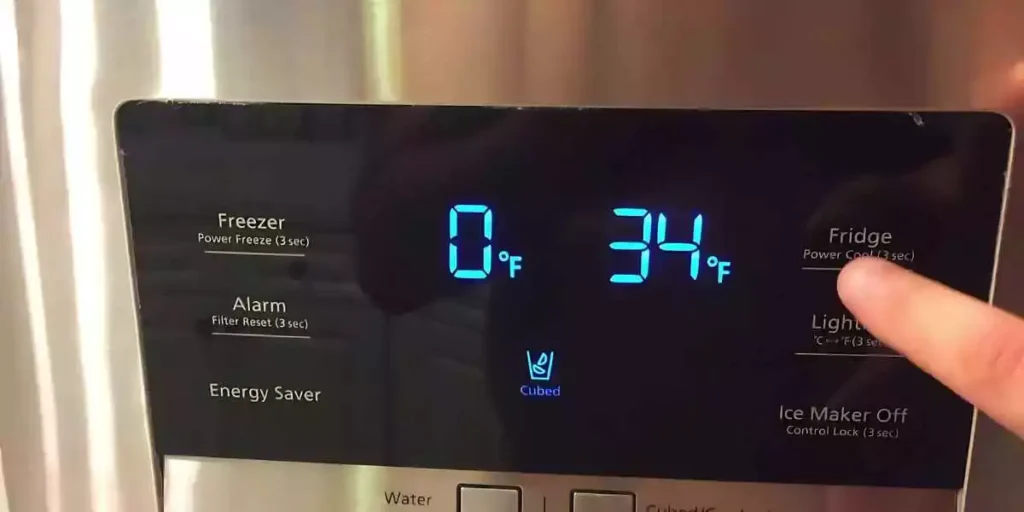
One possible cause of ice build-up is setting too low-temperature settings.
When the refrigerator is overly cold, excess moisture in the air can condense and freeze, leading to ice accumulation under the deli drawer.
To prevent this, ensure that the temperature settings are adjusted to an appropriate level recommended by the manufacturer.
Improper Food Placement:
Placing items with high moisture content near the back and bottom of the refrigerator compartment can contribute to ice formation.
This occurs because the colder areas in the refrigerator tend to be located at the back and near the bottom.
To mitigate this issue, it is important to store items in the proper areas within the refrigerator.
Keep items that release more moisture, such as fruits and vegetables, in the designated crisper drawers or other appropriate compartments.
Blocked Defrost Drain:
Another common cause of ice build-up is a blocked defrost drain. The defrost drain is responsible for draining away melted ice and water from the freezer compartment.
Water can accumulate and freeze under the deli drawer when the drain becomes blocked.
To address this, bthe refrigerator and locate the defrost drain, usually found at the back of the freezer compartment.
Gently clear any debris or ice blocking the drain using a soft cloth or a pipe cleaner.
Once the drain is clear, the excess water will be able to flow freely and prevent ice accumulation.
Faulty Door Seals:
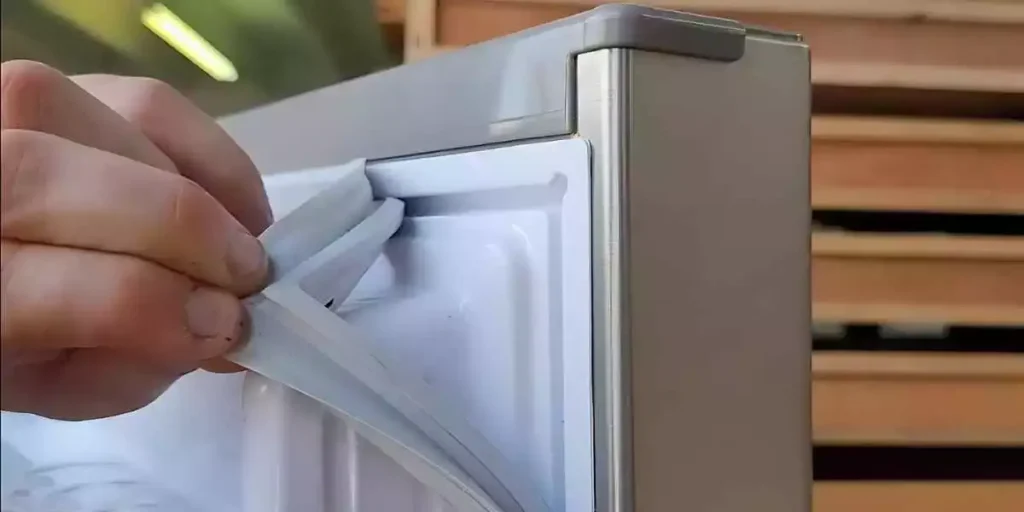
Damaged or worn-out door seals can infiltrate warm, humid air into the refrigerator, causing frost and ice to form.
To check the integrity of the door seals, run your hand along the edges of the door to feel for any cold air escaping.
Additionally, place a sheet of paper between the door and the refrigerator and try to pull it out.
If the paper slides out easily, it indicates that the door seals are not functioning properly.
In such cases, consider replacing the door seals to ensure a tight seal and prevent the entry of warm air.
Insufficient Ventilation:
Poor airflow within the refrigerator can contribute to ice build-up.
Cold air circulation is impeded when items are crowded or placed too close to the walls or vents, leading to moisture accumulation and subsequent ice formation.
To improve ventilation, avoid overcrowding the refrigerator and ensure that there is enough space between items for air to circulate freely.
Additionally, ensure that the refrigerator’s air vents are not blocked by food or other items.
The Impact of Ice Build-Up on the Functionality of Your Refrigerator
Clogging Your Refrigerator’s Drain
This icy invader does not stop there! It can block your refrigerator’s drain. The blocked drain can’t let the water from the defrost cycle out.
This causes water to build up and form more ice. It’s like a snowball getting bigger and bigger!
Disturbing Your Fridge’s Balance
Your refrigerator needs a perfect balance to work well. Ice build-up under the deli drawer can disturb this balance.
The ice might cause the drawer to tilt, leading to uneven cooling. This could mean your veggies won’t stay as fresh as they should be.
Making Your Fridge Work Harder
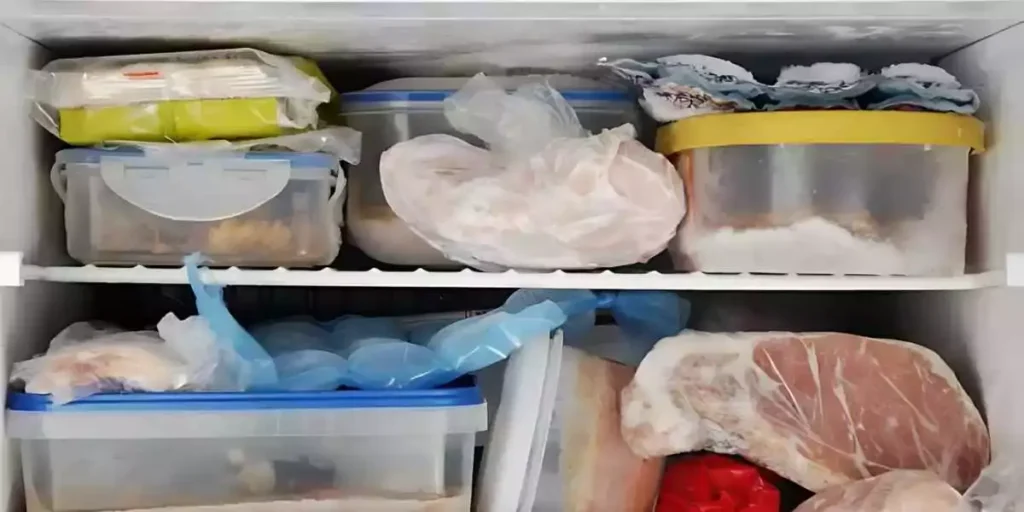
Ice build-up can force your refrigerator to work extra hard. When there’s a lot of ice; the fridge struggles to keep a constant temperature.
It’s like running with a heavy backpack, harder than it should be!
Increasing Your Energy Bills
A fridge that’s working overtime can use more electricity. As a result, your energy bills go up.
So, that little ice cube under your deli drawer might end up costing you more than you think!
Blocking the Air Flow
Airflow is crucial for your refrigerator’s efficiency. It helps evenly distribute cold air. But, an ice build-up can block this airflow.
Your refrigerator might not be able to cool all your food properly. Nobody wants warm cheese, right?
Damaging Your Refrigerator
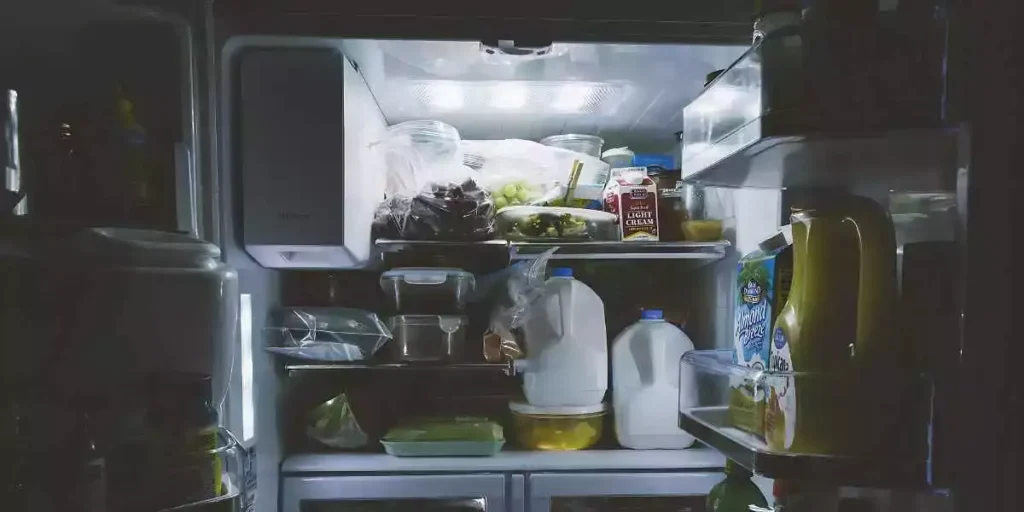
Ice build-up can also harm your fridge in the long run. For example, it can damage the coils or fan, important refrigerator parts.
Like a car with a broken wheel, a fridge with damaged parts can’t function properly.
Spoiling Your Food
Last, but not least, ice build-up can lead to spoiled food. Uneven cooling can cause some food to freeze and others to become warm.
It’s like having a snowstorm and a heatwave in your fridge simultaneously!
Steps to Solve the Ice Build-Up Under the Deli Drawer Samsung Refrigerator
Unplug the refrigerator.
This is important to do before you start troubleshooting any electrical components.
Check the defrost drain tube.
This small tube runs from the deli drawer to the evaporator coils.
If the tube is blocked, water cannot drain properly and may pool under the drawer, leading to ice build-up.
You can use a flashlight to look inside the tube and see if there is any debris blocking it.
You can remove any with a pipe cleaner or a straightened wire hanger if you find any.
Check the defrost drain pump.
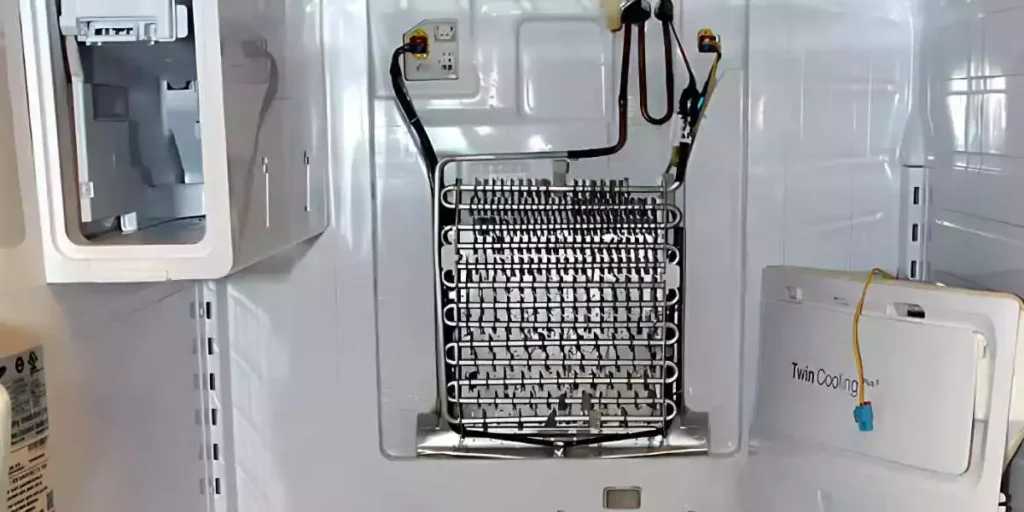
This small pump helps move water from the defrost drain tube to the evaporator coils.
If the pump is not working properly, water may not be able to drain properly and may pool under the drawer, leading to an ice build-up.
You can check the pump by listening to a humming noise. If you do not hear a noise, the pump may not be working properly. You may need to replace the pump.
Check the water inlet valve.
This is a valve that controls the flow of water to the ice maker and the water dispenser.
If the valve is not working properly, water may leak into the deli drawer, leading to ice build-up.
You can check the valve by looking for any leaks. If you bany leaks, you may need to replace the valve.
Clean the condenser coil.
The condenser coil is located on the back of the refrigerator. It is responsible for removing heat from the refrigerant in the refrigerator.
If the coil becomes dirty, it may not remove heat effectively, leading to increased condensation and ice build-up in the refrigerator, including under the deli drawer.
You can clean the condenser coil with a vacuum cleaner or a brush.
Reset the refrigerator.
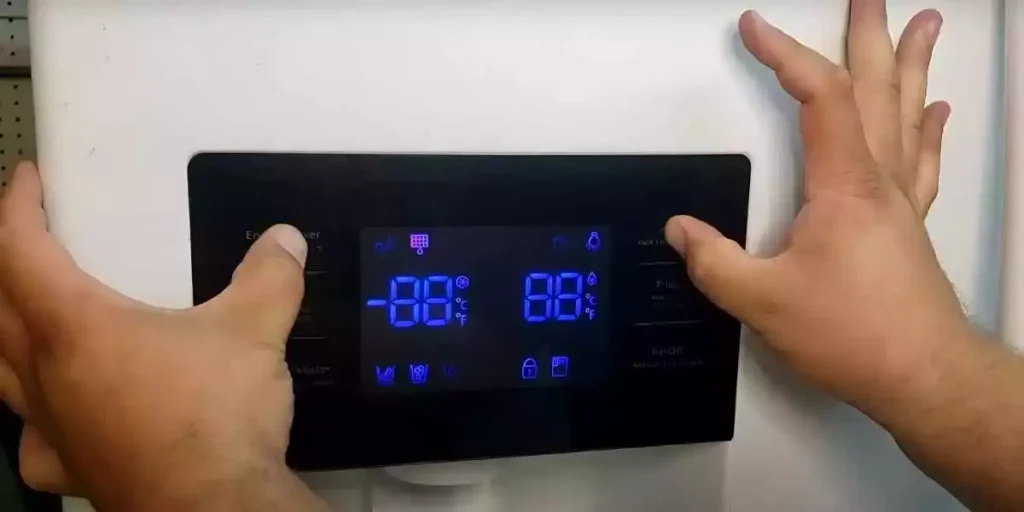
Once you have completed all the troubleshooting steps, you can reset the refrigerator by turning it off and back on.
This may help to clear any errors causing the ice build-up.
Maintenance Tips to Prevent Ice Build-Up in Samsung Refrigerators
Careful Ice Maker Operation
The ice maker’s operation and temperature are crucial in preventing ice build-up in your Samsung fridge.
For first-time usage or after a long break, ensure the fridge operates for at least six hours before starting the ice-making process.
The set temperature should be –15°C or colder for the freezer compartment. If your ice storage is full but not dispensing, check for issues like the fridge’s mode on display.
Your fridge might be in ICE–OFF mode, which you can rectify by pressing the Ice Type button.
Routine Cleaning of the Refrigerator
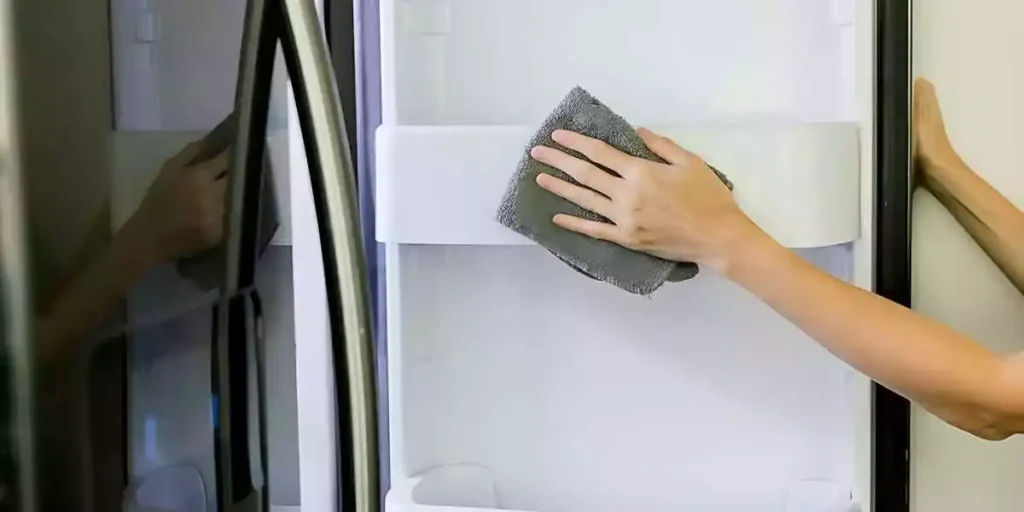
Regular cleaning of your refrigerator is a practical preventive measure against ice build-up.
Use a microfiber cloth and, if necessary, a damp cloth with mild detergent to clean the inside and outside of your fridge.
Samsung’s Family Hub models have a Clean Screen mode for easy cleaning of the touchscreen panel.
If your refrigerator is stainless steel, use a stainless steel cleaner or polish like Bar Keepers Friend to maintain the surface.
Proper Fridge Temperature and Minimal Opening
Maintaining the right temperature and avoiding frequent fridge openings helps prevent ice buildup.
The ideal setting is 37 to 40°F for your fridge and 0°F for your freezer. Frequent opening adds humidity which eventually turns into ice.
Defrosting Your Samsung Refrigerator
If frost builds up inside your fridge, it must be defrosted. To defrost, unplug the fridge, empty its contents, remove shelves and drawers, and let the frost melt naturally.
Afterward, thoroughly clean the inside and outside to collect water left by melting ice before reinstalling shelves and drawers.
Adjusting Temperature and Checking Ventilation
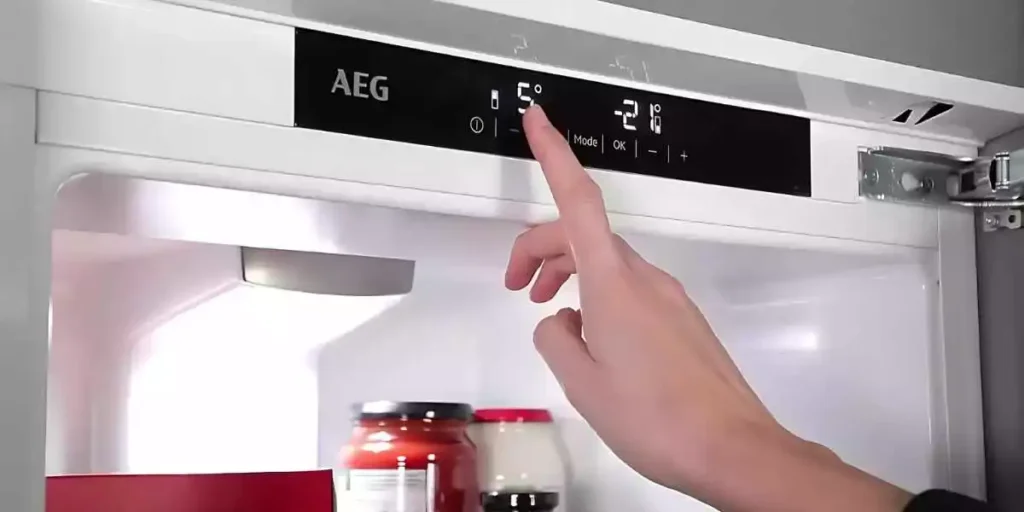
You can adjust the temperature and check the ventilation to fix ice buildup in a Samsung refrigerator.
If the refrigerator’s temperature is too low, increase it to the correct point, and vice versa. This gives the unit a chance to work optimally.
Maintaining the Ice Maker
Regular maintenance can keep your ice maker at its best. Make sure to change the water filter every six months and use only official Samsung replacement filters.
Empty your ice bin every two weeks and wipe it dry to prevent ice buildup. Dispense at least a small amount regularly to prevent clumped ice.
Turn it off if you’re not using your ice maker for a while.
FAQs About Samsung Refrigerator Ice Build-Up Issues
How Do I Stop Ice From Forming Under My Samsung Refrigerator’s Deli Drawer?
Cleaning the condenser coils and the housing underneath the unit periodically can help.
Also, try to ensure your freezer door is properly sealed and closed.
What Can I Do If The Ice Buildup Problem Has Already Started?
Act fast! It’s important to take corrective measures right away.
This will ensure your food stays safe and prevent costly repairs.
How Can I Clean The Inside Of My Refrigerator To Prevent Ice Buildup?
Use a vacuum cleaner with an upholstery tool to remove built-up dirt from the bottom of your fridge compartment.
Also, clean out your drain tube using an old toothbrush or pipe cleaner.
What Should I Do If My Refrigerator Door Isn’t Closing Properly?
Ensure nothing is resting against the back wall of the freezer and the door seal is attached properly.
If the door seal is ripped or torn, it may need to be replaced.
What Can Cause Poor Ventilation In My Samsung Refrigerator?
Packages resting against the rear wall of the freezer, or a blocked air vent, can hinder proper ventilation. Space your food out as much as possible to improve airflow.
What Happens If The Flap On The Ice Dispenser Is Not Closing Properly?
If the flap on the ice dispenser isn’t closing properly, it allows warm air to enter the freezer compartment.
This can cause frost to build up in the freezer and possibly under the deli drawer.
Conclusion
You can stop ice from forming under your Samsung fridge’s deli drawer! Change the temperature, store food right, clean the defrost drains, check the door seals, and let air flow.
Doing these steps helps save energy, keeps your food fresh, and your fridge working great. Be a fridge superhero, and keep the ice away.
